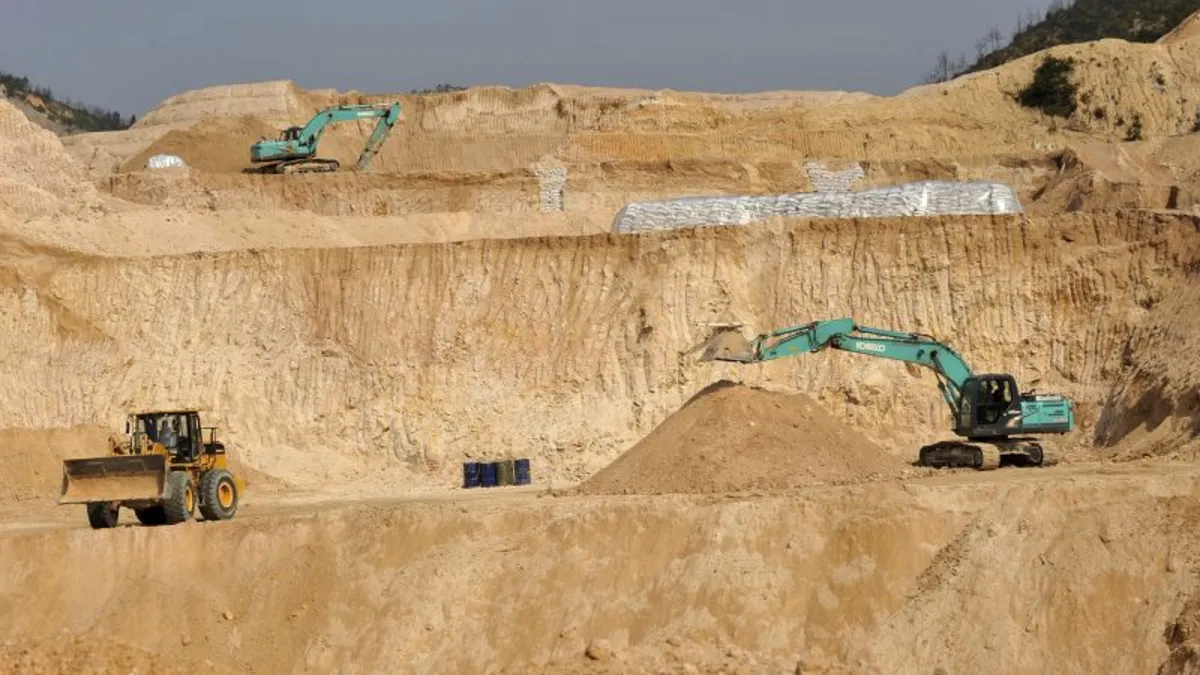
As experts describe the current situation as a "chip shortage on steroids," the auto industry is bracing for a significant potential shortage of rare-earth elements. These minerals have become a focal point in the ongoing global trade war, and their scarcity could mirror the pandemic-era chip shortage that drastically inflated car prices across the United States.
China maintains a virtual monopoly over the 17 rare-earth elements, which are essential components in various products ranging from automobiles to jet engines and electronics such as smartphones and flat-screen TVs. These minerals are also critical for medical applications, including the contrast dye used in MRI machines and certain cancer treatments. Recently, China has intensified its grip on these resources by introducing a new licensing requirement for exports, effective from April, which has slowed the flow of these vital elements to much of the world, including the United States.
This week, delegations from the United States and China are meeting in London to discuss a new trade deal, with rare-earth elements likely playing a crucial role in the negotiations. According to a spokesperson from the US Treasury, the second day of these trade talks commenced on Tuesday at the historic Lancaster House, located near Buckingham Palace.
Gracelin Baskaran, director of the Critical Minerals Security Program at the Center for Strategic and International Studies, has indicated that US companies currently possess only about two to three months' worth of rare-earth supply. If a trade agreement is not reached, she warns that “industry simply could not manufacture” beyond this limited timeframe.
Former President Donald Trump recently announced that Chinese President Xi Jinping had allegedly agreed to resume exports of rare-earth minerals. However, experts like Baskaran caution that even a temporary lifting of restrictions may not suffice for US manufacturers. “It makes it extremely difficult for industry to get a reliable read on what the next three months, six months, or a year are going to look like,” she stated. Furthermore, the anticipated pace of exports may not be sufficient compared to historical levels.
Industry insiders have expressed concern that American companies are on the verge of depleting their stockpiled inventory. An unnamed auto industry expert informed CNN that widespread shutdowns in production could become a reality due to these rare-earth shortages, coining the phrase “the chip shortage on steroids” to describe the situation.
The previous chip shortage led to significant disruptions in auto production, resulting in soaring car prices that forced many consumers to pay above the sticker price for new vehicles. This time around, the situation is equally dire. “People think that it’s only electric vehicles (EVs), but it’s not,” the expert explained. “It’s in everything in every car. It’s in the motors that run windshield wipers. One supplier I’m talking to said there are sensors in seat belts. I think there’s going to be production disruptions all over the place. China really has our balls in a vise.”
Ford has already halted production at its Chicago plant, which manufactures the Explorer, for a week due to these shortages. While the company has not confirmed the cause, reports from Reuters indicate that suppliers for major American car manufacturers, including General Motors and Stellantis, have been granted temporary export licenses for rare earths, but only for a limited duration of up to six months.
Given the critical importance of rare earths to various US industries, efforts are underway to explore alternative materials. Roderick Eggert, a professor at the Colorado School of Mines and deputy director of the Critical Materials Innovation Hub, notes that while substitutes exist, they come with performance trade-offs. “These substitutes come at the cost of performance,” he remarked. “Motor designs that don’t use magnets at all tend to be less efficient.”
Eggert emphasized that the best chance to avoid substantial disruptions lies in a timely agreement between the United States and China to restore normal flow of rare earths. “It is in the interest of the Chinese to remain a stable and trustworthy source for rare earths and other related products,” he said. “Unfortunately, rare earths have become entangled in the larger tensions surrounding US-China trade negotiations.”
The term rare earths can be misleading, as these materials are not particularly rare in the Earth's crust but are challenging and costly to extract and process. Currently, China accounts for 92% of the global output in the processing stage, leading other nations, including the United States, to expedite the establishment of their own processing capabilities—a process that may take months or even years to fully implement.
Baskaran lamented that more proactive measures should have been taken to prepare for this impending crisis. “Of course, we should have seen this coming,” she stated. “We should have started this 15 years ago.”